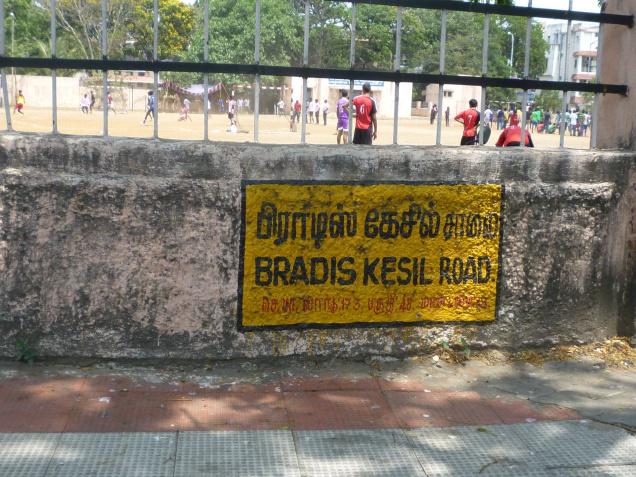
Brodie’s Castle, along the Adyar, is said to have brought ill luck on several of its residents
Bradis Kesil Road, says a signboard towards the end of R.K. Mutt Road. This is what lack of awareness and official apathy have done to one of the most intriguing places in the city.
Brodie’s Castle on the banks of the Adyar is one of the historic homes of Chennai. It is said to have brought ill luck on several of its residents. James Brodie, of the firm of Jarvis and Brodie, built it in 1796. Perhaps inspired by an eponymous castle in Scotland, he designed it with sloping outer walls and two castellated turrets. The nearest settlement was Mylapore and the road leading there became Brodie’s Castle Road. Today most of it is R.K. Mutt Road, with the last short stretch alone retaining the old name.
Shortly after he moved in, Brodie’s businesses failed forcing him to rent out his castle. The first tenant was Sir Thomas Strange, Chief Justice of the Supreme Court of Madras. Brodie moved back in 1802 only to drown in the Adyar. The business family of Arbuthnot then purchased Brodie Castle. They rented it out as a house by the river fetched high rent in hot Madras. It was also an artist’s delight making it a favourite subject for watercolours.
In 1810, Edward Vaughan, chaplain of St. George’s Cathedral, moved in, only to lose his wife immediately. He rose to become archdeacon and stayed on at Brodie’s Castle till his retirement in 1829. In 1866, Brodie’s Castle was in the news for the wrong reasons when James McIvor of the Bank of Madras was its occupant. His two daughters, an aide-de-camp to the Governor and the president of the Madras Corporation were killed in a boating accident.
In 1906, the firm of Arbuthnot crashed and Brodie’s Castle was bought, in the distress sale that followed, by Subramania Pillai of the firm of P. Venkatachellum, famed for its condiments and curry powders. It became one of the 75 houses that Pillai owned in Madras. He chose to rent out Brodie’s Castle. Charles Cotton, chief secretary, was a tenant, and he filled the house with fine furniture and art. He was one of the few lucky residents.
Chief Justice Sir Lionel Leach occupied it in 1937. One afternoon in October 1943, the Adyar burst its banks and destroyed many of Sir Lionel’s possessions. Lawyers had a good time imagining the dour Judge sitting in his high-backed chair and futilely commanding the river to rise no further. In 1949, Brodie’s Castle became the residence of P.S. Kumaraswami Raja, the then Premier of Madras State. He lost his post following a stunning electoral defeat in 1952, despite contesting from his family stronghold of Srivilliputhur.
Brodie’s Castle was never a residence thereafter. In 1956, it became home to the Central College of Karnatic Music, now the Isai Kalluri, and in 1968, was renamed Thenral. Maintained after a fashion, by the PWD, it survives, and is worth a visit.
source: http://www.thehindu.com / The Hindu / Home> News> Cities> Chennai / by SriRam V. / May 02nd, 2013